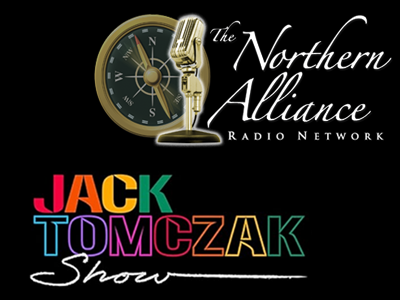7 Ways for Churches to Better Serve People with Disabilities
Pastors

Audio By Carbonatix
9:45 AM on Tuesday, April 22
By Gail Ewell, Pastors

1. Start with the Biblical Basis for Inclusion
Creating changes to better include people with disabilities should first start by understanding why it’s important to do so. People with special needs and their families are often marginalized in our communities, schools, and even our churches — a heartbreaking reality that Jesus addressed.
The Bible recounts numerous instances where Jesus helped those with disabilities, reflecting God’s work through acts of inclusion. In John 9:2-41, Jesus heals a man born blind, demonstrating compassion and challenging societal norms.
Galatians tells us we are “one in Christ Jesus.” Colossians teaches us that “Christ is all that matters” — not our race or social status, and certainly not our level of ability.
That’s why inclusivity lies at the heart of my own faith, and why I ask you to place it close to the heart of your church. We are one with each other in Jesus, without respect to ability or need. We must make sure our churches explicitly and intentionally embody that reality.
Photo credit: ©GettyImages/Courtney Hale

2. Offer Inclusive Services
Churches can provide inclusive services by tailoring offerings to the needs of congregants with disabilities. For instance, you can offer a unique class specifically designed for people with special needs during Sunday morning services. Our church usually provides a calmer, more structured class and invites neurotypical students to participate so that it’s inclusive.
Your church can also provide accommodations in the main Sunday service, such as organizing volunteer buddies to sit with individuals with special needs or live-streaming services in sensory-friendly rooms.
Additionally, explore innovative approaches, like streaming services into outdoor spaces with pop-up tents and TV monitors, where parents can share space with children who have sensory sensitivities or others who feel more at ease in a quieter, more open environment. This allows for more movement during services.
In offering these services, you help ensure everyone encounters a safe and understanding environment for worship and fellowship.
Photo credit; ©GettyImages/ThitareeSarmkasat

3. Host Awareness Campaigns
It isn’t enough just to carve out spaces where men, women, and children with disabilities or special needs can feel comfortable. It’s important to educate others about their needs, as well, and to foster a culture of inclusion and empathy. Help neurotypical congregants understand different levels of ability and need and how they might help others. Education really helps with knowing how to include those with different abilities. For example, help the congregation understand the needs around them. Sometimes, just a listening ear is all a parent of a child with special needs wants.

4. Make Your Church Physically Accessible
Your grounds and place of worship must be physically accessible. Designated parking, ramps, elevators, and seating for those with mobility challenges are excellent starting points.
Take inventory of how you might create or improve accessibility for people of all abilities to feel welcome at your church.
Certain accommodations may necessitate greater initial investment, but you can begin with simpler options and gradually implement larger ones as time passes.

5. Enhance Your Communication Approach
Recognize that diverse abilities and requirements often correspond to unique learning and communication styles. Consider adapting Bible study materials to incorporate visual aids and social stories, catering to varying learning styles. For example, your church can provide an audio version of online Bible study articles and utilize visual aids and signage with picture icons within your facility.
Our church has successfully employed illustrated Bible stories, graphic organizers, and infographics tailored to different learning styles. These approaches have helped individuals with disabilities engage more deeply with scripture and teachings. Notably, children with autism often struggle with the abstract nature of moral and religious concepts, so visual representations have been particularly effective!
It’s also helpful to implement communication aids such as sign language interpreters, captioning services, and visual storyboards to assist those with hearing, speech, or cognitive disabilities. Bible studies, services, and social events can be modified with communication aids to greatly improve inclusivity.
Photo credit: ©GettyImages/PeopleImages

6. Optimize Engagement
For some individuals with disabilities, a bit of variety in the learning and community experience goes a long way. When the conventional means of teaching and ministry fall short, more unconventional and adaptable means might reach someone in need.
Consider encouraging their participation in the life of your church through interactive elements like workshops, guest speakers, educational materials, mentoring buddy programs, and support groups. You never know who might be waiting for precisely this sort of outreach.
True inclusion invites all people to participate in church experiences. Consider small ways you might encourage this in different programs and events. For example, our church provides sensory break areas at teen and middle school events, allowing those who need a quiet area to still be included in fellowship.
Photo credit: ©GettyImages/FG Trade

7. Provide Inclusion Training for Church Staff and Volunteers
Enhance accessibility and inclusivity within your church community by providing training for staff and volunteers. This education can be eye-opening for those who haven’t received such guidance and is tremendously helpful for both the staff and individuals with special needs.
Consider providing training sessions on making services and facilities more accessible, sensory-friendly, and welcoming through practices that foster an inclusive environment.
For instance, at our church, we offer training for volunteers who help with our inclusive E-Sports program, which provides opportunities for kids with special needs to play sports alongside their typical peers. Additionally, our children’s ministry coordinators receive training to better serve those with special needs.
Lastly, remember that this service is beneficial for both. Inclusion empowers those with special needs, producing empathy and character in neurotypical volunteers and staff.
It’s been incredible to see many people at our church respond to the opportunity to come alongside those with disabilities and grow in their understanding and ability to serve them.
Providing training can be a significant blessing to your church community and the broader community. It benefits everyone involved.
Of course, these seven points are just a few of many possible places to begin. The needs of each church, like each individual, are different. But it’s possible for these little gestures of inclusivity to permeate all we do. They will transform your community — and perhaps even yourself. After all, inclusivity isn’t just one ministry of many. It is the ministry to which we are all called; it is a pure and joyful form of Jesus’ love.







